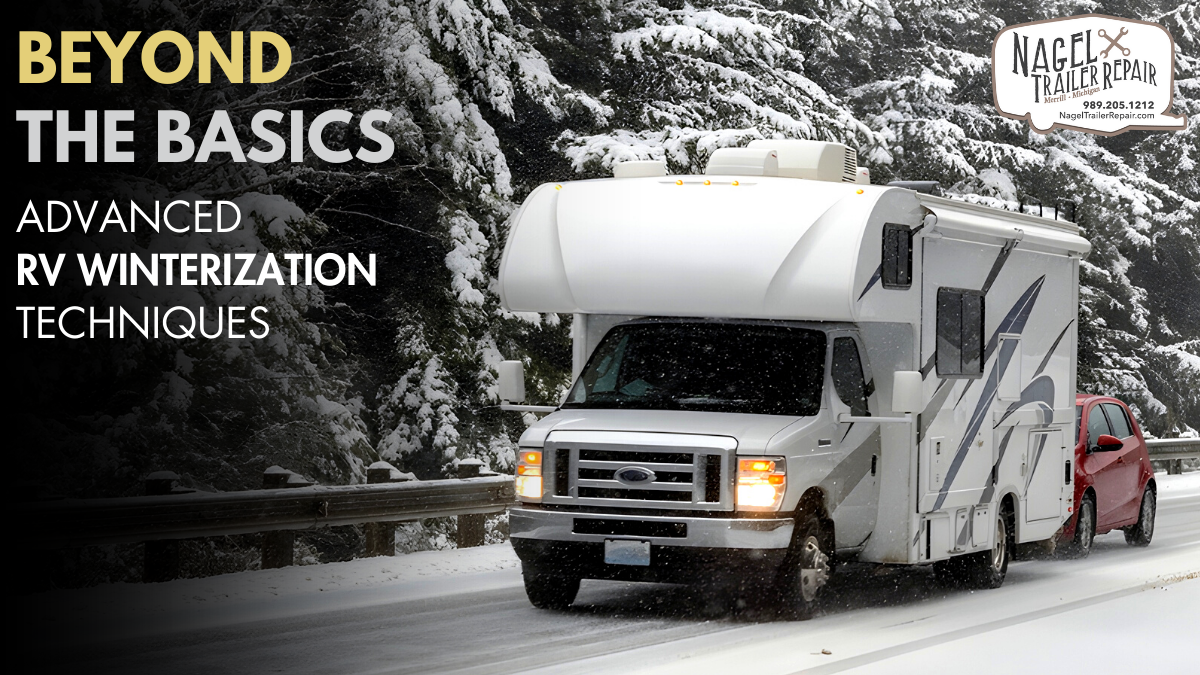As winter approaches, RV enthusiasts know that proper winterization is crucial to protect their investment and ensure a smooth start to the next camping season. While the basics of RV winterization involve draining water tanks and adding antifreeze, advanced techniques can further safeguard your RV from the harsh elements. In this blog post, we'll explore some advanced RV winterization techniques to help you go beyond the basics and keep your RV in top condition during the colder months.
Insulating Vulnerable Areas:
One of the key elements of advanced RV winterization is identifying and insulating vulnerable areas prone to heat loss. Pay special attention to windows, doors, and any gaps or seams in the RV's exterior. Adding weather stripping, thermal curtains, or even reflective insulation can significantly reduce heat transfer, keeping the interior warmer and lowering energy consumption.
Underbelly Enclosures:
Many RVs have exposed underbellies, leaving vital components like water tanks and pipes susceptible to freezing temperatures. Installing an underbelly enclosure, typically made of weather-resistant materials, creates a protective barrier against the cold. This not only prevents freezing but also helps maintain a more stable temperature for the RV's plumbing and equipment.
Upgraded Heating Systems:
While RVs come equipped with heating systems, advanced winterization may involve upgrading or supplementing these systems. Consider adding electric space heaters, heated floors, or even a catalytic propane heater for more efficient and targeted warmth. These additions can make a significant difference in maintaining a comfortable interior temperature during the coldest months.
Remote Temperature Monitoring:
Investing in a remote temperature monitoring system allows you to keep tabs on your RV's interior temperature even when you're away. With the help of smart devices and mobile apps, you can receive real-time alerts if the temperature drops below a preset threshold. This proactive approach enables you to take immediate action to prevent freezing and potential damage to your RV.
Battery Maintenance:
Cold temperatures can significantly impact your RV's batteries. Advanced winterization includes proper battery maintenance to ensure they remain charged and functional. Consider using a battery tender or installing a battery heater to prevent the batteries from losing power due to the cold. This ensures that essential systems, such as the furnace and monitoring devices, continue to operate effectively.
Tire Care:
Cold weather affects tire pressure, and maintaining proper tire inflation is crucial for safe RV travel. Advanced winterization involves regularly checking and adjusting tire pressure, as well as investing in tire covers to protect against the elements. Additionally, parking your RV on leveling blocks helps prevent flat spots on the tires that can occur during extended periods of inactivity.
Conclusion:
In conclusion, mastering advanced RV winterization techniques is paramount, especially for those navigating the chilly Michigan winters. Beyond the basics lies a realm of strategies to fortify your RV against the harsh elements. Insulating vulnerable areas, employing underbelly enclosures, and upgrading heating systems create a robust defense against freezing temperatures. Remote temperature monitoring, coupled with diligent battery and tire care, ensures a proactive approach to safeguarding your RV investment.
By adopting these advanced practices, Michigan RV winterization becomes a comprehensive and effective process, allowing you to face winter's challenges with confidence. Remember, the key is not merely surviving the cold season but thriving in it, and these advanced techniques pave the way for a worry-free and enjoyable RVing experience, even in the frostiest of Michigan winters.

